North American Elk
- December 29, 2023
- 0 comment
The North American elk, scientifically known as Cervus canadensis, is a majestic and iconic species that inhabits the diverse landscapes of North America. Easily identified by its towering antlers, which can span up to four feet in width, the elk is a member of the deer family and is one of the largest land mammals on the continent. Its distinctive reddish-brown coat, with a buff-colored rump and a pale-colored mane, adds to its striking appearance. Adult males, known as bulls, are significantly larger than females, or cows, and can weigh between 700 to 1,100 pounds, while females generally range from 500 to 600 pounds.
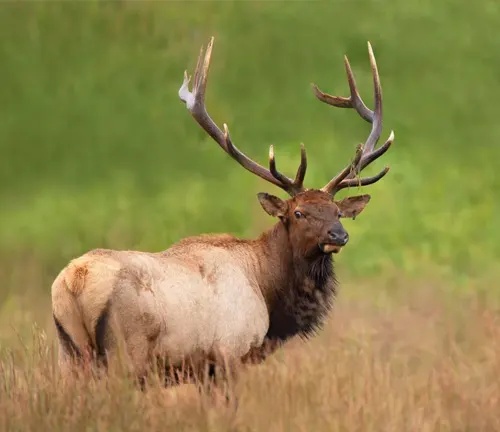
The North American elk is renowned for its adaptability and can be found in a variety of habitats, including forests, grasslands, and even mountainous regions. Its range extends from the northern reaches of Alaska and Canada down to the mountainous regions of the United States, with populations also established in parts of Mexico. These resilient creatures are known for their seasonal migrations, often covering vast distances in search of food and suitable breeding grounds. The elk’s ability to thrive in different environments has contributed to its widespread presence across the continent.
In terms of behavior, elk are social animals, forming herds that vary in size and composition throughout the year. During the mating season, or rut, which typically occurs in the fall, males engage in fierce battles for dominance to secure mating rights. This is also when the distinct bugling calls of the males echo through the wilderness, serving as both a territorial display and a means to attract females. The North American elk, with its impressive physical features and dynamic behaviors, continues to captivate the imaginations of wildlife enthusiasts and plays a vital role in the ecosystems it inhabits.
| Aspect | Description |
|---|---|
| Scientific Name | Cervus canadensis |
| Size | Bulls: 700 to 1,100 pounds; Cows: 500 to 600 pounds |
| Antler Span | Up to four feet in width |
| Coat Color | Reddish-brown with buff-colored rump and pale mane |
| Habitat | Diverse, including forests, grasslands, and mountains |
| Range | North America, from Alaska and Canada to Mexico |
| Mating Season | Fall (rut) |
| Behavior | Social, forming herds; males engage in rut behaviors |
| Distinctive Call | Bugling during rut, serving as a territorial display |
A Comprehensive Exploration
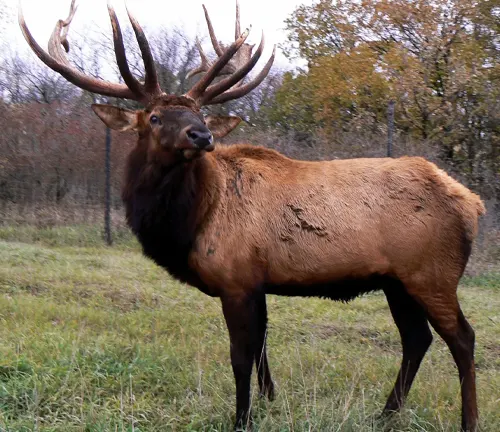
General Biology
The North American elk, scientifically known as Cervus canadensis, stands as a symbol of wild beauty across the continent. This magnificent species, a member of the deer family, boasts an impressive physical presence. Adult males, or bulls, can weigh between 700 to 1,100 pounds, while females, or cows, generally range from 500 to 600 pounds. Distinguished by their striking reddish-brown coats, buff-colored rumps, and towering antlers that can span up to four feet in width, these creatures are among the largest land mammals in North America.
Reproduction
The annual spectacle of the elk rut, or mating season, is a captivating display of nature’s power and beauty. During the fall, bulls engage in fierce battles for dominance, competing for the right to mate with females. This intense competition involves bugling calls and physical confrontations. Successful bulls contribute to the survival of the species by passing on their genes to the next generation. Female elk, on the other hand, play a crucial role in nurturing and protecting the calves once they are born.

Behavior
The social behavior of North American elk adds another layer to their captivating nature. These creatures form herds that fluctuate in size and composition throughout the year. Their adaptability is evident in seasonal migrations as they cover vast distances in search of food and suitable breeding grounds. The intricate dynamics within elk herds and the dramatic displays during the rut highlight the complexity of their social structure.
Etymology and Terminology
The etymology and terminology associated with the North American elk reveal cultural and historical threads woven into its identity. Known scientifically as Cervus canadensis, the elk has various colloquial names across different regions. Understanding the linguistic nuances enhances our appreciation for the rich tapestry of human-elk connections.
Habitat
The North American elk’s habitat showcases its remarkable adaptability. From dense forests to expansive grasslands and rugged mountainous terrains, these creatures thrive in diverse environments. This adaptability has contributed to their widespread distribution across North America, from the northern reaches of Alaska and Canada to the mountainous regions of the United States and even parts of Mexico.
Food Habits
The elk’s survival is intricately tied to its food habits. These herbivores graze on a variety of plants, including grasses, shrubs, and tree bark. Understanding their dietary preferences provides insights into their ecological role and impact on vegetation in their habitats.
Voice, Sounds, Tracks And Signs
Elk communicate through a range of vocalizations, with the bugling call being a distinctive feature during the rut. These sounds serve both as territorial displays and as a means to attract mates. Additionally, elk leave behind tracks and signs that wildlife enthusiasts and researchers use to understand their movements and behavior.
Distribution
The distribution of North American elk spans a vast and diverse range. Their presence extends from the Arctic tundra of Alaska to the mountainous regions of the United States and down into parts of Mexico. Examining the factors influencing their distribution sheds light on the interconnected ecosystems they inhabit.

Managing Damage and Mitigating Conflict
Damage Prevention and Control Methods
The harmonious coexistence between humans and North American elk requires thoughtful strategies to prevent and manage potential conflicts. As these majestic creatures share habitats with human communities, implementing damage prevention and control methods becomes essential. From safeguarding crops to protecting property, understanding and employing effective strategies is crucial in maintaining a delicate balance.
Habitat Modification
One key approach to mitigating human-elk conflicts is habitat modification. This involves altering the landscape to discourage elk from venturing into areas where they may cause damage. This might include strategically planting vegetation to create natural barriers or adjusting land use practices to minimize attractants that could draw elk closer to human settlements.
Exclusion
Exclusion methods play a pivotal role in minimizing interactions between elk and human infrastructure. Installing sturdy fencing around agricultural areas or sensitive landscapes can prove effective in preventing elk from causing damage. Thoughtful design and implementation are essential to create barriers that respect both elk movement patterns and human needs.
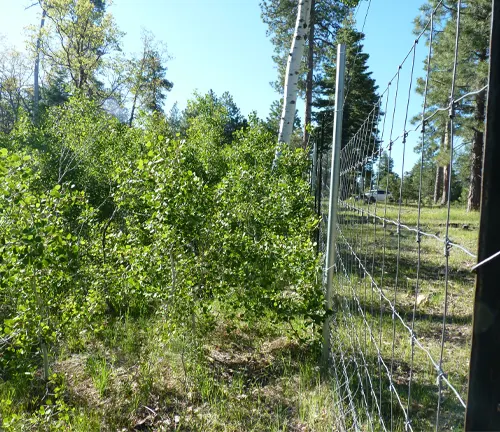
Frightening Devices
The use of frightening devices is a non-lethal approach to deter elk from unwanted areas. These devices, ranging from auditory alarms to visual deterrents, capitalize on elk’s natural wariness and sensitivity to disturbances. When employed judiciously, these devices can create an environment where elk are less likely to cause damage without resorting to harm.
Repellents
Repellents offer another layer of defense in managing elk-related conflicts. These substances, whether applied to crops or specific areas, emit odors or tastes that elk find unappealing. As a result, elk are less likely to damage or consume the treated plants, providing an eco-friendly means of protection for both human interests and elk well-being.
Toxicants
While a more controversial method, the use of toxicants is sometimes considered in extreme cases where other measures have proven ineffective. However, the ethical implications and potential impact on non-target species must be carefully weighed. Responsible use, if deemed necessary, requires thorough consideration of environmental and wildlife welfare.
Shooting
In situations where non-lethal methods have failed, or when there is an immediate threat to human safety or property, controlled shooting may be employed as a last resort. This method demands precision, adherence to regulations, and a deep understanding of elk behavior to ensure the targeted individual is the source of the conflict.
Trapping
Trapping is another method employed in damage control, especially when the goal is to relocate elk to more suitable habitats. Humane trapping methods and careful consideration of the elk’s well-being are essential. Authorities often implement trapping programs with the intent of preserving both human interests and elk populations.
Different Species
Rocky Mountain Elk
(Cervus canadensis nelsoni)
Primarily found in the Rocky Mountains and surrounding areas of North America.
Larger body size, with males (bulls) typically having impressive antler configurations.
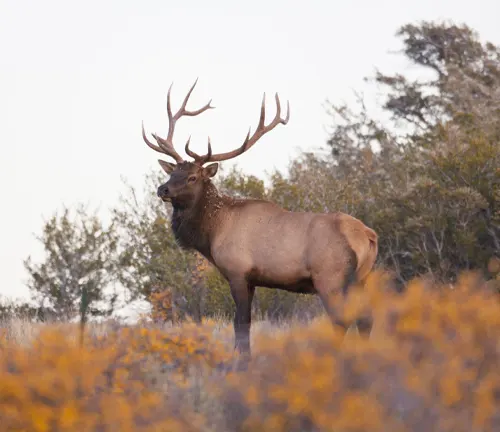

Tule Elk
(Cervus canadensis nannodes)
Historically native to California, Tule elk are now found in limited areas within the state.
Smaller in size compared to other subspecies, adapted to marshy environments.
Roosevelt Elk
(Cervus canadensis roosevelti)
Predominantly found in the coastal rainforests of the Pacific Northwest, including parts of Washington, Oregon, and Northern California.
Known for their large body size and dark, often chocolate-brown coats.

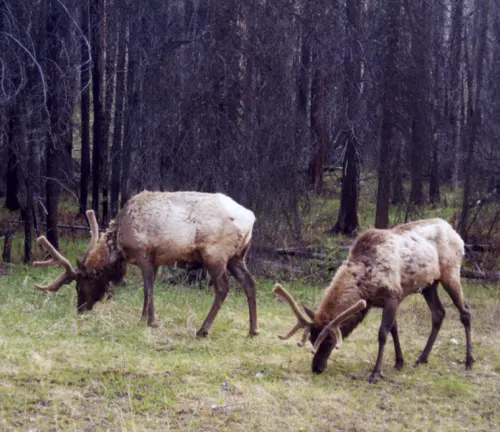
Manitoban Elk
(Cervus canadensis manitobensis)
Historically found in the prairie regions of central North America, including parts of Canada.
Well-adapted to open grasslands, often exhibiting lighter coats.
Merriam’s Elk
(Cervus canadensis merriami)
Historically found in the southwestern United States, including Arizona and New Mexico.
Smaller in size, adapted to arid and mountainous environments.
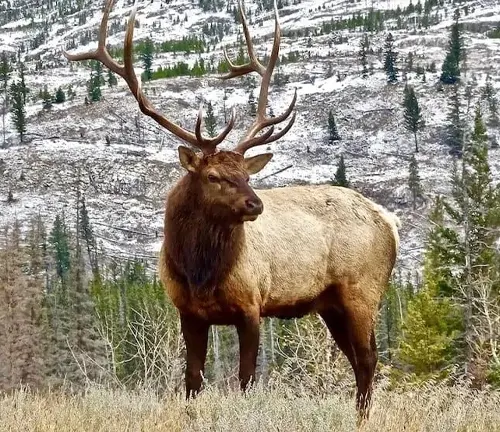
Frequently Asked Questions (FAQs)
- What is a North American Elk?
North American Elk, scientifically known as Cervus canadensis, is a large species of deer native to North America. It is commonly referred to as elk in North America. - Where do North American Elk live?
North American Elk inhabit a variety of environments, including forests, grasslands, and mountainous regions. They are found from the northern reaches of Alaska and Canada to the mountainous areas of the United States, with some populations extending into Mexico. - What is the difference between elk and other deer species?
Elk are distinct from other deer species due to their larger size, impressive antlers (mainly in males), and unique behaviors, such as bugling during the mating season. - How big do North American Elk get?
Adult male elk (bulls) can weigh between 700 to 1,100 pounds, while females (cows) generally range from 500 to 600 pounds. - What is the mating season for North American Elk?
The mating season, known as the rut, typically occurs in the fall. During this time, male elk engage in competitive displays, including bugling calls and physical contests, to establish dominance and attract mates. - Do female elk have antlers?
No, female elk do not have antlers. Only males (bulls) grow antlers, which they shed and regrow annually. - What do North American Elk eat?
Elk are herbivores and primarily graze on grasses, shrubs, and tree bark. Their diet can vary based on the season and available vegetation. - How do elk communicate?
Elk communicate through a variety of vocalizations, with the bugling call being particularly notable during the mating season. They also use body language and scents to convey information. - Are North American Elk dangerous to humans?
Generally, elk are not considered aggressive toward humans. However, during the rut, male elk may become more territorial and can pose a threat if approached too closely. It’s important to maintain a safe distance and avoid disturbing them. - How can human-elk conflicts be mitigated?
Human-elk conflicts can be managed through various strategies, including habitat modification, exclusion methods (such as fencing), frightening devices, repellents, and, in extreme cases, controlled shooting or trapping.





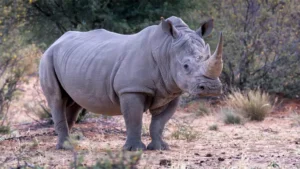
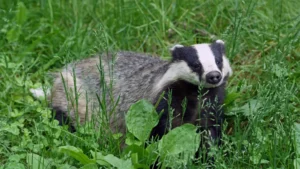







Leave your comment